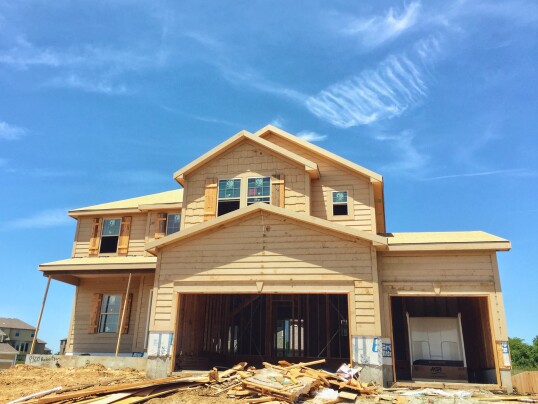There are typically several weeks between when a contract to buy a home is signed and when the home’s sale closes. During this time, the sale is considered pending. Once it closes, that pending sale will become a final sale. That’s why the National Association of Realtors’ Pending Home Sales Index keeps track of contract signings each month. They’re considered a good future indicator of where home sales numbers are headed. According to the NAR’s most recent release, signings dipped in August. In fact, pending sales fell 7.1 percent from the month before. Lawrence Yun, NAR’s chief economist, says the drop coincides with mortgage rate increases. “Mortgage rates have been rising … since August, which has diminished the pool of home buyers,” Yun said. “Some would-be home buyers are taking a pause and readjusting their expectations about the location and type of home to better fit their budgets.” Whether it was mortgage rates or the start of a late summer slowdown, the drop means existing-home sales data is likely to see a similar dip in the near future. (source)
Archive for September 2023
Contracts To Buy Homes Down In August
Demand For Home Purchase Loans Falls
According to the Mortgage Bankers Association’s Weekly Applications Survey, demand for loans to buy homes fell 2 percent last week from one week earlier. The decline follows a 2 percent increase the week before and puts purchase loan demand 27 percent lower than it was last year at the same time. Joel Kan, MBA’s vice president and deputy chief economist, says elevated rates and low inventory are holding buyers back. “Overall applications declined, as both prospective home buyers and homeowners continue to feel the impact of these elevated rates,” Kan said. “The purchase market, which is still facing limited for-sale inventory and eroded purchasing power, saw applications down over the week and 27 percent behind last year’s pace.” Refinance activity also fell during the week, slipping 1 percent from the week before. The declines came during a week when average mortgage rates were up across all loan categories, including 30-year fixed-rate loans with both conforming and jumbo balances, FHA loans, 15-year fixed-rate loans, and 5/1 ARMs. (source)
Home Price Index Hits A New All-Time High
The S&P Case-Shiller Home Price Index is among the most closely watched measures of U.S. home prices. The index covers all nine census divisions and has been collecting data for nearly 30 years. According to the most recent release, home prices are climbing and have now made up for the declines that began last summer. Craig J. Lazzara, managing director at S&P, says the rebound has been broad based. “We have previously noted that home prices peaked in June 2022 and fell through January 2023, declining 5 percent in those seven months,” Lazzara said. “The increase in prices that began in January has now erased the earlier decline, so that July represents a new all-time high for the National Composite. Moreover, this recovery in home prices is broadly based.” Still, regional differences remain, with prices up most in the Chicago, Cleveland, and New York metro areas, while Las Vegas and Phoenix saw year-over-year declines. (source)
Location Matters When Assessing Market Outlook
National housing market trends can give you an idea where things are heading generally but every local market has its own dynamic. That means, conditions will vary somewhat from one region to the next, between states, and even within metro areas. Proof of this can be found in ATTOM Data Solutions’ Special Housing Impact Report. The report looked at counties across the country to determine which were strongest and which were most vulnerable according to things like affordability, underwater mortgages, foreclosures, and unemployment. What it found was housing markets in the South were the most stable while areas in the Northeast and around Chicago had the most vulnerable markets. ATTOM’s CEO, Rob Barber, says despite vulnerabilities even at-risk markets aren’t in danger of an imminent crash. “As with earlier reports, it doesn’t mean any one area or cluster of areas is about to crash,” Barber said. “The overall market and the economy remain way too strong for imminent warnings to be sounded. But there are weak spots that are still popping up as areas to watch, especially if the market turns back downward.” (source)
Permits To Build Homes Rise While Starts Fall
The new home market was hot this summer. A lack of available existing homes led more buyers to explore purchasing a new house, which supported both sales and home building activity. In August, though, things slowed. In fact, the number of new homes that began construction fell sharply, according to newly released numbers from the U.S. Census Bureau and the Department of Housing and Urban Development. Mostly, the decline was due to a drop in multi-family construction, though single-family home building also saw a 4.3 percent decline. The slowdown was largely attributed to elevated mortgage rates. But, while current construction activity was slower in August, the number of permits authorized to build new homes was up 6.9 percent, which points to the market’s continued strength. It also indicates August’s numbers may only be a temporary setback before building activity is back on the rise. (source)
72% Of Homes Sold In Under A Month In August
Housing market conditions have changed drastically over the past couple of years but some things have remained constant. The pace of home sales, for example. The vast majority of homes for sale are still selling in less than a month. In fact, according to new numbers from the National Association of Realtors, 72 percent of homes sold in August were on the market less than 30 days, with the typical home selling in 20 days. That’s slower than last year but only by a few days. The reason? The inventory of homes for sale remains low, leading homes for sale to go quickly. Lawrence Yun, NAR’s chief economist, says low inventory is also the reason home prices continue to increase. “Home prices continue to march higher despite lower home sales,” Yun said. “Supply needs to essentially double to moderate home price gains.” As long as the inventory of homes for sale remains low, home prices will continue to move higher and the homes that are for sale will find buyers quickly. (source)
Mortgage Application Demand Climbs Higher
According to the Mortgage Bankers Association’s Weekly Applications Survey, demand for mortgage applications rose 5.4 percent last week from one week earlier. The improvement included a 13 percent increase in refinance activity and a 2 percent gain in demand for loans to buy homes. Joel Kan, MBA’s vice president and deputy chief economist, says challenging conditions have kept demand below last year’s level. “Purchase applications increased for conventional and FHA loans over the week but remained 26 percent lower than the same week a year ago, as home buyers continue to face higher rates and limited for-sale inventory, which have made purchase conditions more challenging,” Kan said. “Refinance applications also increased last week but are still almost 30 percent lower than the same week last year.” Still, rising demand is an encouraging sign, especially during a week when average rates rose for 30-year fixed-rate loans with both conforming and jumbo balances. Loans backed by the Federal Housing Administration also saw increases, while 15-year fixed-rate loans and 5/1 ARMs fell. (source)







